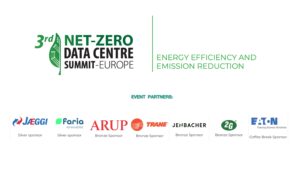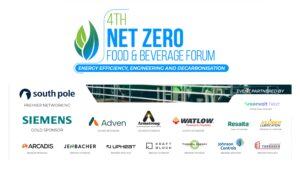The scale of funds pouring into digital infrastructure today is staggering. The UK data centre investment market is really starting to heat up, fueled by the dramatic increase in demand from Artificial Intelligence. This trend is reshaping everything, taking the UK data centre investment discussion away from merely square footage and concentrating heavily on raw, stable electrical capacity. Every choice now becomes a multi-billion-pound strategic decision.
The entire industry is facing new challenges. It includes hostile private equity strategies, navigating extremely complex planning regulations, and, most critically, securing substantial energy supplies. So, this article discusses the profound shifts in asset value, the complex regulatory landscape in which developers currently operate, the intense competition for secure and agile grid access, and the innovative engineering required to accommodate next-generation, high-density AI infrastructure within the UK data centre investment sector.
Capital & Investment Transformation: Valuation, Financing, and M&A
Investors are fundamentally altering their method of valuing data centre assets. This means the underlying calculation of risk and reward for the enormous amounts of money entering this space is changing, too. This shift directly impacts every major UK data centre investment decision today. This section takes you through precisely how financiers and investors currently compute the value of these buildings. It also goes through the very structure put to use to deploy enormous amounts of capital, and the new drivers of large industry mergers & acquisitions:
The Asset Valuation Model Shift: Real Estate to Utility Infrastructure
Data centers once squarely fit into the real estate model. This is where valuations were based on metrics such as leased income per square foot and occupancy. That methodology is no longer relevant. The model has completely pivoted to a data center utility model. This is where value links to contracted power capacity, namely the tied-up megawatt (MW) load. Furthermore, when a potential investment in a UK data centre is under consideration, the initial important step is establishing the long-term/secure power supply contract.
This is because in the hyperscale era, the one thing that you can’t easily duplicate is power. You can construct a building anywhere, but without assured, gigantic, durable power, the property isn’t much of an asset for a significant tenant. This severe shortage significantly inflates capital multiples. Moreover, this means deals are sold at high multiples of the agreed-upon EBITDA. The reason is that insured MW load is seen as an irreplaceable portal into a limited market.
Private Equity’s Role: Hyper-Leverage and Fund Deployment Strategy
Private Equity (PE) companies and Sovereign Wealth Funds (SWFs) are the primary forces behind size in the UK data centre investment market. They are funding massive, multi-stage campus developments, frequently over 100MW, from the beginning. Their approach is based heavily on the construction of highly leveraged Special Purpose Vehicles (SPVs). The PE fund establishes a focused private equity data centre SPV for one large project or a defined geographic portfolio.
Lenders feel comfortable with such a high amount of borrowing since the project cash flows are backed by long-term ‘take-or-pay’ leases. This is typically with highly rated hyperscalers. This structure decouples project risk, so campus financial trouble cannot contaminate the broader PE fund. PE teams quickly commit capital via the SPV to pay for phased construction. It locks in critical grid capacity and land rights ahead of competitors. The SPV strategy enables rapid, enormous aggregation of capital. This is to bring new hyperscale data center Europe capacity quickly to market.
M&A Focus: Acquiring IP, Operational Expertise, and Decarbonisation Pathways
Mergers and Acquisitions in the UK data centre investment sector are now less about purchasing available capacity. Today’s M&A focuses on the strategic acquisition of highly integrated assets. They are the ones that address fundamental industry issues around power, efficiency, and sustainability. Furthermore, organizations are pursuing small companies that own strategic intellectual property assets. It includes patents for highly efficient Direct-to-Chip (D2C) liquid cooling technology, critical for future AI workloads.
In parallel, the value of an acquisition target increases significantly when it has proven, compliant Power Purchase Agreements (PPAs). They should be the ones that meet statutory net-zero targets. Investors view such audited PPAs and good green credentials as a de-risking element. It lowers future regulatory and financial obligations. Apart from the physical infrastructure, sophisticated Data Center Infrastructure Management (DCIM) platforms and the skilled operational teams operating them are also in high demand. Gaining this operational excellence simplifies integration and also directly increases efficiency for a significant UK data centre investment.
Regulatory & Planning Frameworks: Policy, Law, and Permitting
Developers today face a regulatory space that has completely transformed the risk and timing for any large UK data centre investment. The government is aware of the strategic importance of such infrastructure, but host communities demand some concessions in return for approval. This section describes national mechanisms for streamlining humongous projects. It also goes through the socio-economic burdens local authorities are placing on developers, & the strict new requirements specifying climate transparency and net-zero ambitions:
National Planning Overrides: CNI Designation and NSIP Fast-Tracking
The sheer size of a new 100MW hyperscale data center Europe tends to overwhelm local planners. This directly causes a several-year delay. To counter it, the government employs top-level legal processes to accelerate development. Declaring a facility Critical National Infrastructure (CNI) sends out a message of its strategic value to the country. This helps to dispel local opposition and raise it to the same status as power stations and key transport terminals.
More significantly, the government is permitting some big data centre schemes to utilize the Nationally Significant Infrastructure Project (NSIP) regime. This was intended for enormous projects such as nuclear power stations. Furthermore, this NSIP designation data centre UK path takes the process of consent out of local authorities and into a centralized Development Consent Order (DCO) process operated by one government minister. Whilst the application is very challenging, the NSIP route provides a predictable, statutory timescale. It immensely cuts the construction start uncertainty for a large UK data centre investment.
Local Authority Compliance & Socio-Economic Obligation
Securing planning permission for a large data centre now increasingly involves compliance with a set of mandatory Local Authority (LA) requirements. These extend far beyond the usual financial contributions. LAs exercise their planning influence to require developers to provide certain, high-value socio-economic benefits locally. One common requirement typically focuses on compulsory waste heat reuse obligations.
This could involve the data centre having to feed its waste heat into a district heating grid. This is for surrounding residential or commercial developments. If that is not feasible, the developer has to have a solid backup plan and a cash equivalent. In addition, there is increasing pressure for public reporting of resource usage, in particular, water use and energy consumption. This is with developers frequently having to present detailed, local water saving plans to gain approval. These compulsory contributions are also now a set and non-discursive component of a successful UK data centre investment.
Decarbonisation Mandate & Reporting: TCFD, CSRD, and Mandatory Net-Zero Targets
Regulatory focus on sustainability is gradually moving from voluntary disclosure to required financial disclosure. Companies that run a significant UK data centre investment must now also follow guidelines. It includes the Task Force on Climate-related Financial Disclosures (TCFD) & the EU’s Corporate Sustainability Reporting Directive (CSRD). The TCFD requires reporting of climate risk and opportunities across four groups:
- Governance,
- Strategy,
- Management of risk,
- And metrics.
Most importantly, the CSRD creates a ‘double materiality’ reporting need. It states firms have to report climate concerns in their business and their business’s impact on the environment. For data centres, this includes enforced disclosure of embodied carbon. These are emissions from the production of materials such as steel and concrete, as well as all operational emissions. Failure to correctly report these metrics based on the required standards poses legal and financial risk. This is because regulators and investors will not accept ambiguous sustainability statements.
Energy & Grid Infrastructure Access: Supply, Technical Compliance, and Arbitrage
The greatest challenge for any hyperscale data center Europe initiative is no longer land or access to capital; it is stable power. The UK grid is experiencing extreme congestion, particularly around the big connection points. The old queuing mechanism has also proven ineffective. This section addresses the new financial and technical barriers to accessing grid power. It also goes through the economic case for powering yourself, and how clever operators are capitalizing on their energy consumption in the UK data centre investment market:
NESO’s ‘Ready First’ Reform: Technical Compliance and Financial Surety
The National Energy System Operator (NESO) launched its ‘Ready First’ reform to repair the severely backed-up grid connection queue. This is where speculative schemes would occupy capacity for years. Developers who want a UK data centre investment now have to demonstrate clear, concrete project readiness. This is via a sequence of challenging technical and financial milestones. In order to obtain and maintain a position in the queue, a developer would need to have a guaranteed technical design sign-off. It should validate that the electrical design is complete and ready, usually with substantiation of orders for equipment.
Most importantly, developers are now required to post a substantial, non-refundable financial surety. Their cash deposit is forfeited in the event of failure by the developer to achieve connection milestones on time. Moreover, this financial gatekeeping ensures that only serious, well-funded projects fill the limited capacity. The grid connection reform UK data centre project is all about contractual certainty and technical precision. It requires developers to proceed from planning to detailed engineering much earlier in the project.
Distributed Generation & Private Wire Development: Off-Grid Resilience
Due to the extreme limits within the national grid, the financial and engineering rationale for building dedicated on-site power generation has become a prerequisite for huge hyperscale data center Europe campuses. The distributed generation entails installing huge power sources. It includes highly efficient gas-fired stations or vast solar panels directly adjacent to the data centre. It then involves connecting them directly through a private wire network.
This design avoids the overloaded national transmission and distribution grid for most of the load. So, this provides the operator with unparalleled energy independence. Not only does this avoid multi-year grid connection delays, but it also offers outstanding resilience. This is because the plant is in charge of its main power supply. Although this entails a high initial UK data centre cost in energy infrastructure, it significantly enhances the economics. It achieves this by avoiding transmission charges and removing exposure to volatile wholesale electricity prices.
Optimising Energy Procurement: Arbitrage, Flexibility, and Grid Services
The most advanced data centre owners are all very much engaged in energy markets. They are converting their massive, flexible IT load into a productive revenue stream. This is done through energy arbitrage and offering grid flexibility services. Furthermore, the owner tactfully manages non-business-critical workloads, like long-term data scrubbing or some pauseable model training exercises. This is to run during periods of cheap wholesale electricity. It tends to occur when there is an excess of renewable energy.
In addition to this, the flexible load of the data centre can be sold into the National Energy System Operator’s frequency response and balancing markets. Here, the operator commits to immediately shed non-essential IT load when the grid faces a shortage of supply or a frequency problem in exchange for a large payment for supplying this ‘demand side response’ capacity. This transforms a fixed, gigantic energy cost into an asset, a new, tangible source of revenue. One that minimizes exposure to peak prices and forms the foundation of the contemporary data center utility paradigm.
Physical & Geopolitical Infrastructure: Resilience and Future Technology
The infrastructure underpinning the contemporary data centre, within and without the building, is being transformed. This is fundamentally driven by the intense requirements of AI and rising fears about geopolitical threats. Each investment in a UK data centre requires a long-term vision for physical engineering as well as national security. This part discusses the requirement for the transition from air to liquid cooling. It also discusses the strategic security of international data routes and the engineering problem of housing vast quantities of archive data:
AI Architecture: High-Density Racks and Direct-to-Chip Liquid Cooling
The demand from enormous AI models, which consume thousands of high-performance GPUs, has rendered conventional air-cooled data centre architecture unworkable. Air cooling is not able to dissipate the high levels of heat emitted by contemporary AI architectures. In this, power consumption per rack can easily be more than 100kW. This is driving a full, physical transformation to high-density racks underpinned by Direct-to-Chip (D2C) liquid cooling. D2C cooling employs a cooled liquid, which can be a non-conductive fluid, pumped directly over the hottest components. It includes the CPU & GPU to intercept most of the heat at the point of generation.
This entails a complete redesign of the facility:
- The chiller plant will need to be redesigned for high-temperature fluid loops,
- A sophisticated fluid distribution system will need to be fitted across the data floor,
- And thermal management systems will need to be extremely accurate.
This is a costly but necessary adjustment to hosting AI compute and needs to be included in any future UK data centre investment. Additionally, only with this change of engineering can operators bring in the computer power the market will require.
Subsea Cable Vulnerability: Geopolitics and Sovereign Repair Capacity
Data centres, particularly those in the UK, act as strategic confluences of enormous volumes of transatlantic and European data traffic. Much of it moves along a small quantity of high-capacity subsea fibre-optic cables. These cables and their coastal landing points are a significant single point of failure. They are also a substantial national security threat because of increasing geopolitical tensions. The focus of international data traffic on these connections means that it can cause international connectivity and financial services to crumble instantly. This can be either accidental destruction from fishing nets or deliberate destruction from acts of sabotage.
Moreover, this systemic risk is compelling governments and large operators to invest significant funds in bolstering sovereign capacity. Precisely, this involves creating safe, geographically dispersed landing stations and, importantly, building or buying sovereign assets for deep-sea cable monitoring and swift repair. Additionally, no contemporary UK data centre investment can afford to disregard its dependence on this global, highly exposed physical network. It has become a matter of strategy to guarantee data flow.
Exabyte-Scale Persistence: Next-Gen Media and Archival Economics
The expense of storing the enormous amounts of data generated by AI training sets, compliance archives, and permanent cloud backups is no longer sustainable with conventional enterprise storage. This economic pressure is leading to a shift in architecture to exabyte-scale persistence. This is where there is a need for the intelligent coupling of extremely dense, low-cost archival media. This is for data that will not be frequently accessed. Moreover, developers are now designing systems to include cutting-edge storage technology such as Quad-Level Cell (QLC) SSDs. These are denser and lower in cost per terabyte than traditional SSDs.
They are also including contemporary LTO (Linear Tape Open) tape libraries for long-term, near-zero power storage. They also integrate Optical Disc storage for ultimate data longevity and protection occasionally. The long-term cost-per-terabyte for cold storage is also now a key financial metric. It determines the design of tiered storage systems within the facility. Additionally, maintaining data longevity for compliance and long-term AI data sets is of paramount importance. This makes archival media economics a key design decision on a large UK data centre investment.
Conclusion: Synthesis of Risk and Opportunity
The UK data centre investment market is undergoing a deep transformation. It is fueled by the:
- High-performance requirements of AI,
- The lack of power supply,
- And stringent new sustainability requirements.
This massive increase in capital, financed primarily through the strategic formation of a private equity data centre SPV, has irreversibly shifted the identity of the asset from property to a bespoke utility. Furthermore, this new setting requires that developers are just as adept at overcoming challenging policy barriers, like obtaining NSIP designation data centre UK permissions, as they are at technology engineering, with applying D2C cooling and overcoming the grid connection reform UK data centre issues with distributed generation.
Moreover, the real leaders will be those who can master the intertwined risks of access to power, compliance with regulations, and technology evolution while fulfilling the promise of the data center utility model with giant hyperscale data center Europe capacity. You need to sync your strategy today. Ensure you become part of the engineers, financiers, and policymakers who are building this future to acquire vital, hands-on information. Sign up now for the 3rd Data Centre Design, Engineering, & Construction in London, UK on 2-3 December 2025. Learn more!



